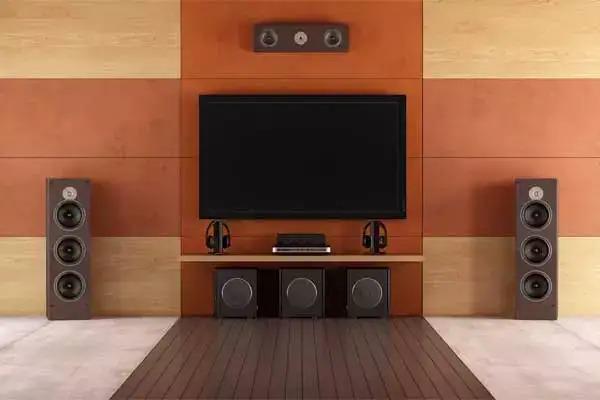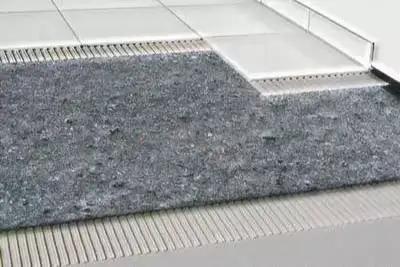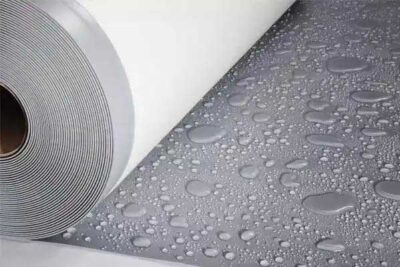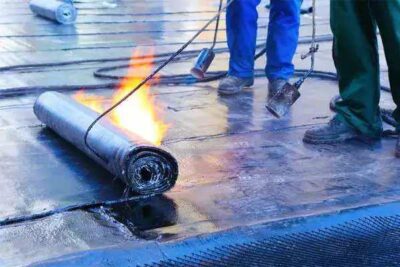
Contents
Soundproofing is a combination of materials and techniques developed to block or reduce the noise level in a given area to prevent sound from coming in or out. In order to achieve good sound insulation, both insulation materials and absorbent materials such as sound-absorbing wood are used. The simplest example of this is buildings that need to be soundproofed and protected against noise produced by road or air traffic.
Sound insulation of buildings is not the same as acoustic insulation. However, the purpose of acoustic insulation is to spread the sound from a source equally in all directions to create an ideal diffused sound field. Widely used in concert halls, conference rooms, theaters, convention centers, public buildings, etc. It is a common practice in boardrooms and offices where excellent voice is required. Therefore, sound conditioning of such facilities is ensured by using acoustic material such as sound absorbing wood panels, ceilings and acoustic panels.
The key to good acoustic condition is to try to minimize unwanted echo (the persistence of a sound after its source has stopped) by using sound-absorbing wood in wooden interiors, interior linings, and wooden walls and ceilings.
What is Sound Insulation
Soundproofing is any way of lowering sound pressure relative to a particular sound source and receptor. There are several basic approaches to reducing sound; increasing the distance between source and receiver, using noise barriers to reflect or absorb the energy of sound waves, using damping structures such as sound chambers, or using active sound generators.
When designing acoustic insulation, two separate soundproofing problems may need to be considered (Sound transmission class and sound reduction index) to improve the sound in a room and reduce sound leakage to/from adjacent rooms or outdoors. Acoustic isolation and noise control can be used to limit unwanted noise.
Soundproofing suppresses unwanted indirect sound waves such as reflections that cause echoes and resonances. It reduces the transmission of unwanted, direct sound waves from the source to an involuntary listener through the use of distance and interfering objects in the sound path.
Studies related to sound insulation and noise control are of great importance for our country and our people in terms of healthy and peaceful individuals, a clean environment, and prevention of occupational accidents by increasing interest and work efficiency. Noise, as a dimension of environmental pollution, is an important problem today and causes many health problems that cannot be analyzed at first.
How to Make Sound Insulation
Sound insulation must be taken into consideration when planning new buildings. In addition, when determining the elements of buildings such as glass, joinery, flooring, walls and ceilings, materials with high sound insulation properties should be carefully selected and used. By using sound insulation material, the sounds heard from the neighboring walls are prevented by the passage of the sounds of the lower and upper floors.
How is the sound insulation done in the buildings that are built and in use and the partition elements inside the building?
- Increasing the density of building elements.
- Making double-layer masonry work.
- To apply double glazing and laminated glass in glass areas.
- Using thick, heavy and gapless doors. If not available, take action.
- To prevent sound leakage from the ventilation ducts, pipes and surrounding spaces that we leave behind by piercing the walls.
- Making floating floor programs against impact sound; It will be correct to make neoprene, polyethylene, rock wool flooring details, elastic fastened suspended ceilings.
Benefits of Sound Insulation
One of the most requested custom home setups is a custom home theater system. Homeowners love the idea of being able to watch their movies with the best sound and picture quality. On the acoustics of the room and the construction of the building, in this blog we will explore some of the advantages that soundproofing can bring to your construction process, so you don’t have to waste time on costly rework.
Sound insulation basically covers the measures to be taken to minimize the negative effects of noise on people. Noise is the general name given to the set of irregular, different frequency components and generally disturbing sounds.
Noise is a natural consequence of urbanization today. Especially in places where urbanization grows irregularly and unplanned, noise harms human health and negatively affects comfort. The disturbing noises of the surrounding factories, the loud noise heard in the residential areas around the airport, the noises of the vendors, the traffic noises, the noises from the neighbors can be disturbing. Sound insulation should be done carefully in order to minimize the harmful and disturbing effects of noise.
Sound Insulation Makes People Efficient
As a result of noise, factory etc. The productivity of the workers in industrial facilities decreases, their attention is distracted, and as a result, occupational accidents occur. The decrease in work efficiency due to noise also damages institutions economically. A similar effect is seen on students studying. Students exposed to noise cannot receive the taught information efficiently because their concentration is impaired by distraction.
Studies conducted on residents around Munich Airport have found that airplane noise reduces children’s long-term recall and comprehension skills. In order for people to continue their work efficiently, it is essential that they be purified from noise with sound insulation.
Why Sound Insulation Is Necessary
As a result of scientific and technological advances, the noise problem, which has emerged in the life of society, has started to gain importance in our country. Noise control, which is an integral part of contemporary life comfort, has also come to the fore in newly designed housing projects. Despite all these advances, no serious and consistent step has been taken in Turkey for now. However, depending on the intended use, the sound level should not exceed 25 decibels in resting areas, 30 decibels in theaters and conference rooms, and 35 decibels in hotel rooms. It should not exceed 35 decibels in bedrooms, 40 decibels in living rooms, and 70 decibels in service areas such as bathrooms and kitchens. The sound level should be 70 in small-scale factories and 80 in large-scale factories.
Despite this, the sound pressure of a jet plane taking off is 140 decibels at a distance of 25 meters, while the steel riveting process in a very noisy factory can reach up to 100 decibels at 5 cm. The sound pressure level of a road excavation made without a silencer at a distance of 7 meters becomes 90 decibels. 80 decibels of the alarm clock, 70 decibels in the cabin, 50 decibels in normal conversation, and 40 decibels in the living room of the car traveling at 50 kilometers per hour. All these constitute the most important elements of noise pollution.
The measurements show that the noise level in the residences is disturbing in the majority of the residences, especially in Istanbul and Izmir. This shows that no attention has been paid to sound insulation in residences other than new projects for now. Despite all this, noise pressure above 60 decibels causes physical and mental damage and poses a danger to human health.
What are the Harms of Noise?
Noise has many psychological and physiological damages on people. Noise is one of the most important causes of stress that leads to diseases. We can briefly list the diseases caused by noise as follows:
It causes nervousness, difficulty in perception, decrease in work efficiency, insomnia, circulatory system disorders, abnormality in detailed body secretions, permanent hearing loss, premature birth and miscarriage in pregnant women.
Even if people get used to the noise over time, the damage will continue to increase. Moreover, there is no treatment for hearing loss caused by noise, either with medication or with a surgical intervention. Permanent hearing loss (deafness) usually occurs in those who are exposed to loud noise for a long time. In addition, the productivity of employees in industrial facilities such as factories decreases, and work accidents occur as a result of their distraction.
The areas that need to be protected from the negative effects of noise are residences, schools, hospitals, dormitories, hotels, workplaces, etc. is the whole of life.
The areas where the noise they spread to the environment should be prevented are; generator, water booster, central heating, entertainment places with high noise level, etc. are places. Cinema, theatre, concert and conference hall, TV and sound recording studio etc. Soundproofing must be done in places such as
Why Sound Insulation Is Important
Sound insulation, protection from the harmful effects of noise by isolating buildings such as residences, schools, workplaces and the environment from unwanted sounds; creating the necessary conditions of use by isolating places such as recording studios, cinemas and concert halls from unwanted sounds; Applications made with the aim of reducing the noise emitted to the environment by isolating noise areas such as generators, hydrophores, heaters are called.
Sound insulation mainly covers the measures to be taken in order to minimize the negative effects of noise on people. Noise is a collection of undesirable sounds that are made irregularly, have different frequency components, and often change with time. Noise, which is briefly described as disturbing sound, is a natural consequence of urbanization today. Generally, in areas where urbanization is unplanned, noise is among the factors that harm human health and comfort. Disturbing noises from a factory in the vicinity, strong noise heard in the residential area around the airport, vendor sounds, traffic noises, sounds from neighbors can be perceived as different doses of noise from people and may be disturbing.
In some environments, low noise level is one of the most important events. The need to keep the sound level low in radio broadcasting and music studios, creating a quiet and peaceful area for patients in a hospital, cutting out the noise coming from outside in the school are the problems that need to be solved during the building phase. In order to provide a peaceful zone in buildings, it is necessary to combat noise. Basically, two techniques are used in the fight against noise. These techniques are acoustic planning and sound insulation. Acoustic planning is the regulation of the reflection time in the closed area. Sound insulation, on the other hand, is a process created to reduce the amount of sound transmitted through building elements.
Difference Between Acoustic Insulation and Sound Insulation
Many people in the industry confuse the terms “acoustic insulation” and “sound insulation”. But the difference is quite simple: soundproofing prevents sound from leaking through walls, acoustic insulation helps sound better in the room.
When it comes to builders and architects, soundproofing is much more important. While acoustic insulation is usually just panels applied to a wall or ceiling, soundproofing can replace the materials you use to build a wall.
How does it work?
You probably have an idea of how the sound goes. When a sound is made, the vibrations travel in waves until they find a solid object to bounce around in the air. The object then vibrates and causes sound. Depending on the nature of the object (whether hard or soft), the sound may be loud or faint.
Most of the rooms are made of fairly hard materials such as wood, plaster and concrete. This means that any sound coming out of the speaker will vibrate these materials. Of course, vibration is not specific to one side of the solid; this means you can hear sounds on both sides of the wall. Of course, there is some level of damping and absorption which means the sound will be weaker. However, it will still be loud enough to disturb the person in the next room.
So you can probably guess one of the most common methods of soundproofing: increasing the absorption and damping power of the walls. This means lining with foam or other insulating materials to dampen vibrations and minimize sound at the other end. While this method is common, it is not the best way to soundproof any space.
Function of Sound Insulation
Sound insulation is kind of similar to thermal insulation. It should not be expected that all of the energy will be absorbed with a sound absorbing material. Therefore, it is not easy to expect a reduction in noise ratio of more than 10 decibels, and it is not economical either. A reduction of 10 decibels means that the noise level is reduced by half. When there is no possibility of eliminating the noise at its source, it is necessary to take necessary measures to prevent its spread in the environment.
These measures can be achieved by constructing barriers, panels or walls to the environment where the sound spreads. In this case, the sound transmission loss and sound insulation level of the barrier material play an important role. As the temperature increases, the speed of sound increases, and as the pressure increases, the speed of sound decreases. Sound insulation means increasing the sound transmission loss and includes noise control. It covers the prevention of the air sounds originating from the environment from passing to the adjacent space and the isolation of the sound emitted by the solid objects caused by the impact.
It is necessary to eliminate the ways in which the sound that disturbs the people in the building is transmitted or to reduce the sound coming from the outside in areas such as concert hall, cinema, library, studio. For this reason, sound insulation should be done by insulating all partition elements with mineral-based materials such as glass wool and rock wool, or with polyurethane or melamine-based acoustic foams.
The Best Way to Soundproof
Sound insulation should be taken into account when building. For this, the materials (windows, doors, etc.) used must be materials with high sound insulation properties (insulation screed, insulation plaster, etc.). Sound insulation is generally applied in areas where the sound is high. However, sound insulation programs can also be made in low-noise areas upon request. With sound insulation, you will get rid of the noises created by the neighbor on the upper floor, if you make the sound and if your neighbor on the lower floor is disturbed by you.
If you want to have floor sound insulation; Material selection is made according to the desired application. eg; If an effective insulation is desired, barrier and non-barrier bondex sponge is used.
Different materials can be used for wall sound insulation. These are rock wool, wood wool, acoustic sponges, panels, barrier sponges, bondex sponges etc. The materials to be used vary according to the sound intensity of the environment. Sound insulation is also applied in environments other than these environments (studio, gym, school, hospital, boat engine compartments, etc.)
Making this application before building is also important in terms of health and psychology. The best way to soundproof a room is decomposition. This is the process of separating the inside and outside of the walls of a room so sound can’t get through. Some professionals call this “building a room within a room”.
Want to learn more about soundproofing for an upcoming project? “Dekorizon Insulation Solutions” professionals can help you. Contact us today to ensure your customer does the job right.







